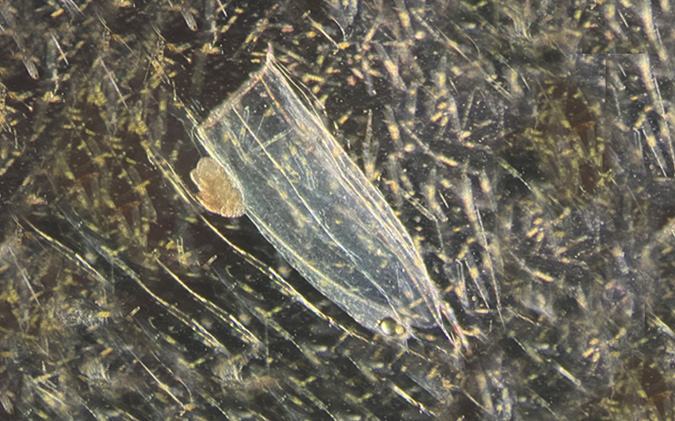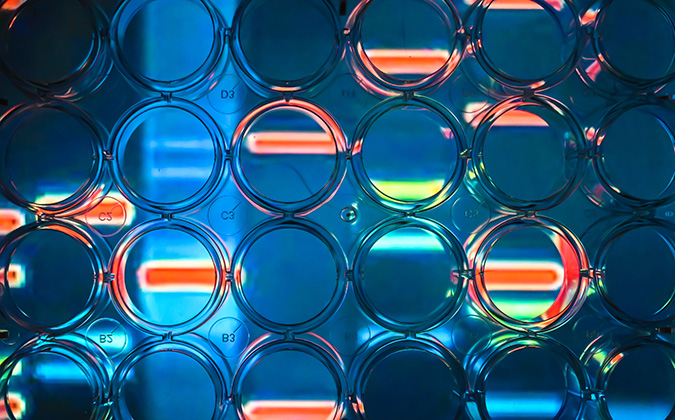
Tackling jellyfish blooms affecting farmed fish in the British Isles
Tiny jellyfish have contributed to cases of gill disease in farmed Atlantic salmon in Scotland and Ireland in the past year, but early recognition and maintaining good general gill health are key to reducing the threat.
Speaking at an industry event in Inverness, Chris Matthews, business unit director for PHARMAQ Analytiq and fish veterinarian, explained that gill disease outbreaks in 2022 have often been linked to the presence of Muggiaea atlantica, a type of micro jellyfish known as a siphonophore.
M. atlantica is a relatively recent visitor to British waters, but recent years have seen an expansion of its range, brought on currents and linked to warmer water allowing it to more successfully reproduce around Britain’s coast.
Monitoring effort increasing
This type of jellyfish is capable of combining with one other to create functional colonies or chains yet remain difficult to see with the naked eye. High mortalities have previously been associated with the species in Norway and Scotland, Matthews said, with blooms reported of up to 2,000 colonies per cubic meter. However, even much lower levels — just one microscopic colony in every 5 liters of water — are known to cause behavioral issues and gill irritation in fish, meaning that vigilance is crucial.
“There was probably more zooplankton monitoring undertaken across Scotland in 2022 than we’ve ever done in the past. Many sites are now trained to collect samples at least once a day at different depths, and then examine the water to identify and count any micro jellyfish present,” he said.
“Credit to those on-site who have to be trained up to do this, because counting them is a really difficult task.”
Timing provokes greater gill issues
Gill issues tend to peak in late summer and autumn, alongside seasonal peaks in jellyfish abundance, he continued. Challenge from amoebic gill disease (AGD) is more severe in relatively warm years such as the past year, so the arrival of jellyfish blooms causes pathology on top of pre-existing changes in the gill and, ultimately, higher mortalities than usual.
Attention to maintaining the best possible gill health ahead of seasonal peaks in plankton, including micro jellyfish, is key to achieving the best possible outcome when faced with elevated levels of harmful species.
“Attention to good net hygiene, AGD management in the early cycle and achieving a healthy, robust fish through optimal nutrition and husbandry all improve case outcomes in the face of elevated micro jellyfish levels,” Matthews said.
“Particular focus on very early-stage identification and treatment of AGD in late spring, when amoebae levels are naturally low, is likely to be a good strategy ahead of the arrival of waterborne irritants such as jellyfish as the water warms.”
Range of jellyfish known to industry
Pelagia noctiluca, known as the mauve stinger, has caused mortalities around the Western Isles of Scotland when huge blooms arise between August and late autumn. The well-known moon jellyfish (Aurelia aurita) in lower numbers tend to be a benign presence, he said, but can occasionally bloom in “extraordinarily high” numbers and pose a fish health risk through deoxygenation of water.
Understanding risks
The threat of jellyfish is generally connected to the numbers of individuals in blooms, and upon reaching a critical mass, there are a number of ways they can negatively affect fish.
Jellyfish venoms are extremely diverse, Matthews explained, and contact between the venom-producing organs of the animals and fish skin or gills can cause both trauma and the release of toxins into fish tissues. As found with M. atlantica, skin damage can result in infection by opportunistic pathogens, but jellyfish can play an even more direct role in this respect.
“We now know that jellyfish can carry species of bacteria potentially pathogenic to fish, and we do see cases of tenacibaculosis following exposure to jellyfish,” he noted.
As well as tackling AGD early, carrying out regular zooplankton monitoring is also a good investment.
“Even though work is still underway to better identify what levels of different species should trigger management decisions such as changing feeding strategy or providing aeration, it does allow farmers to understand and recognize the threat and make decisions along with their health teams on how to manage these cases,” he added.
“I expect both our knowledge and ability to use technology to characterize, quantify and manage harmful zooplankton blooms to increase significantly in the future.”






